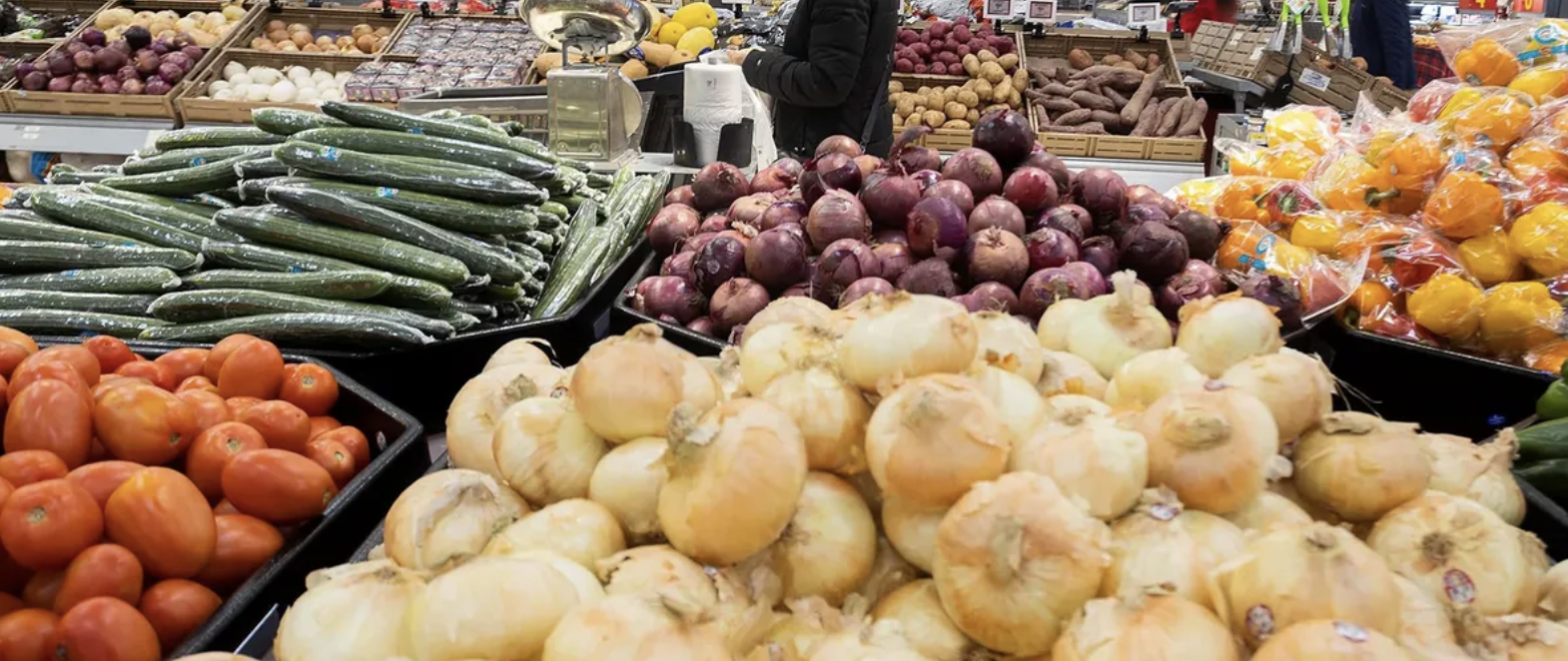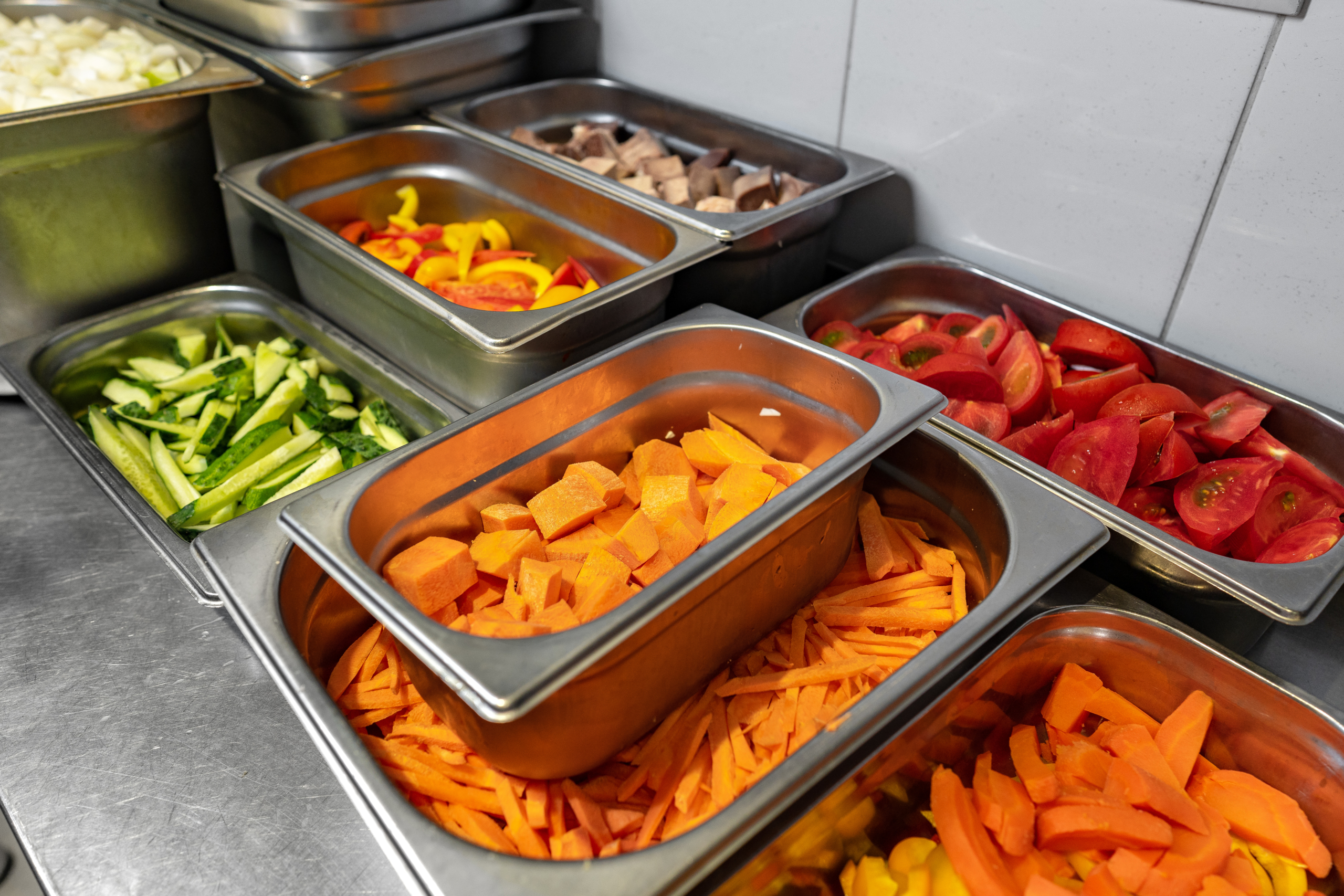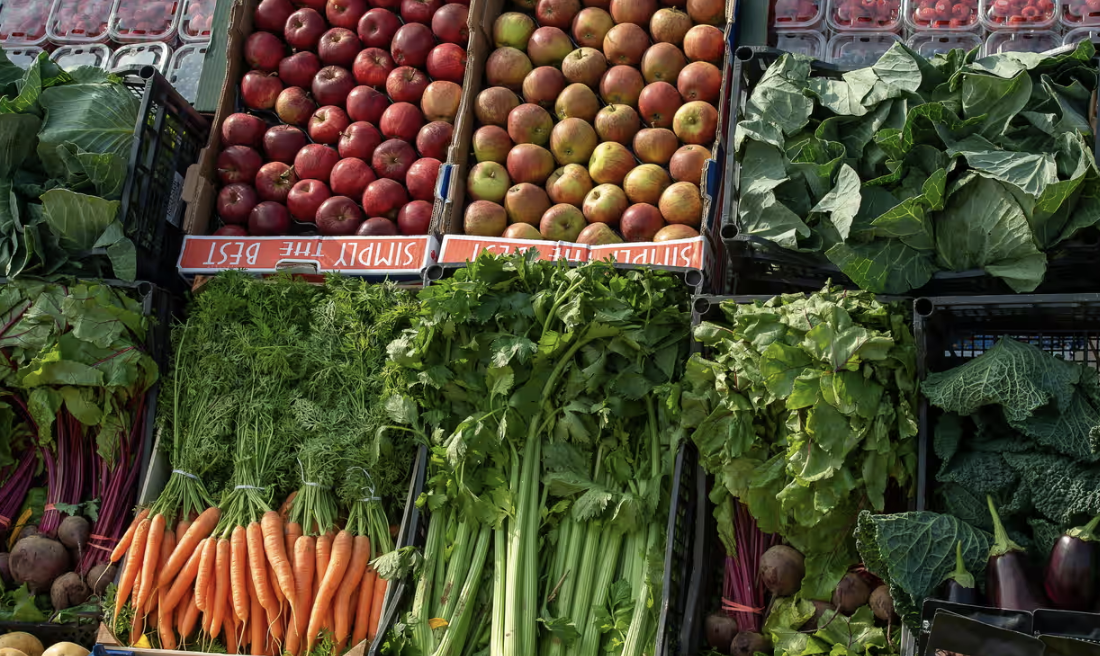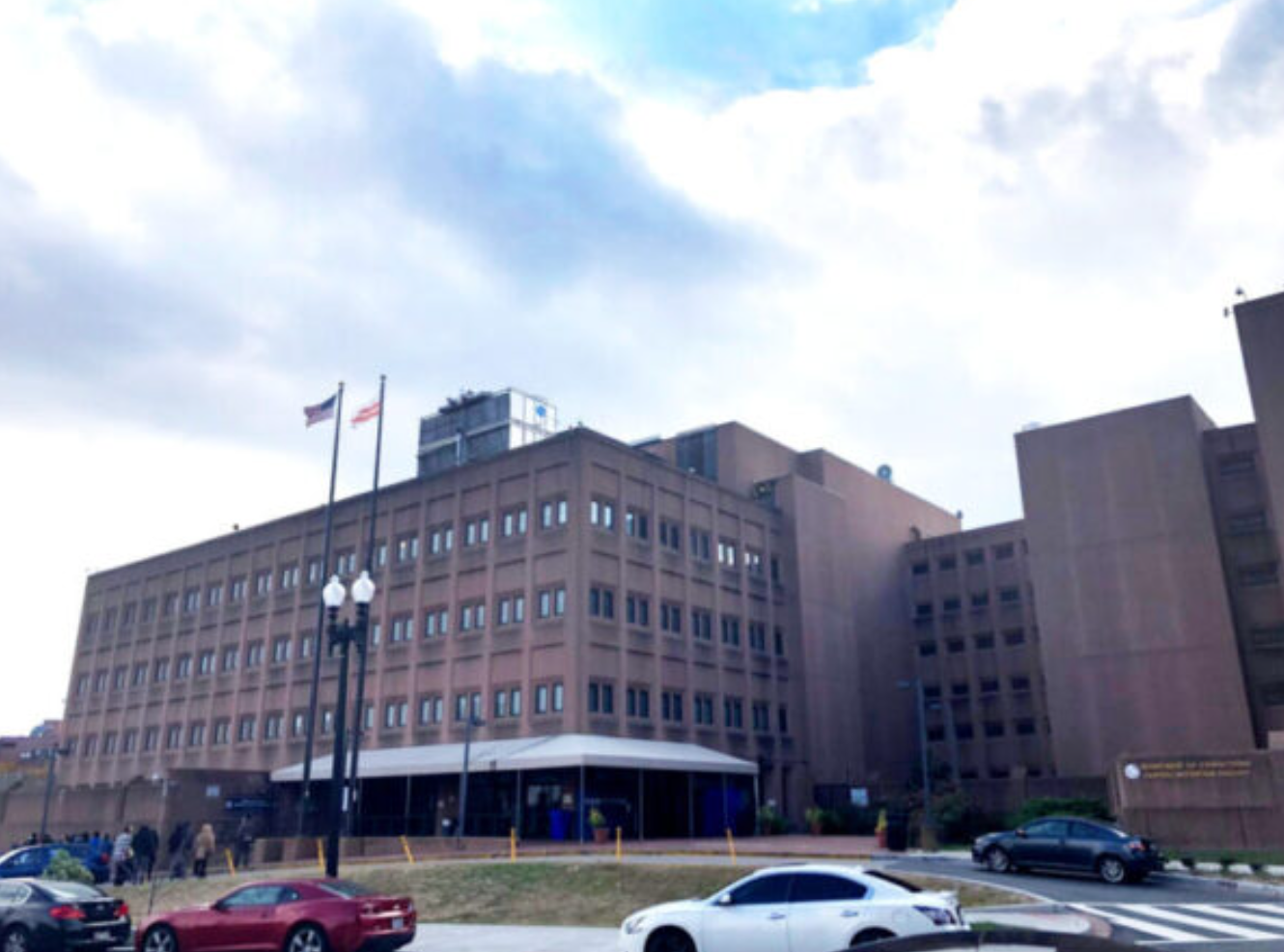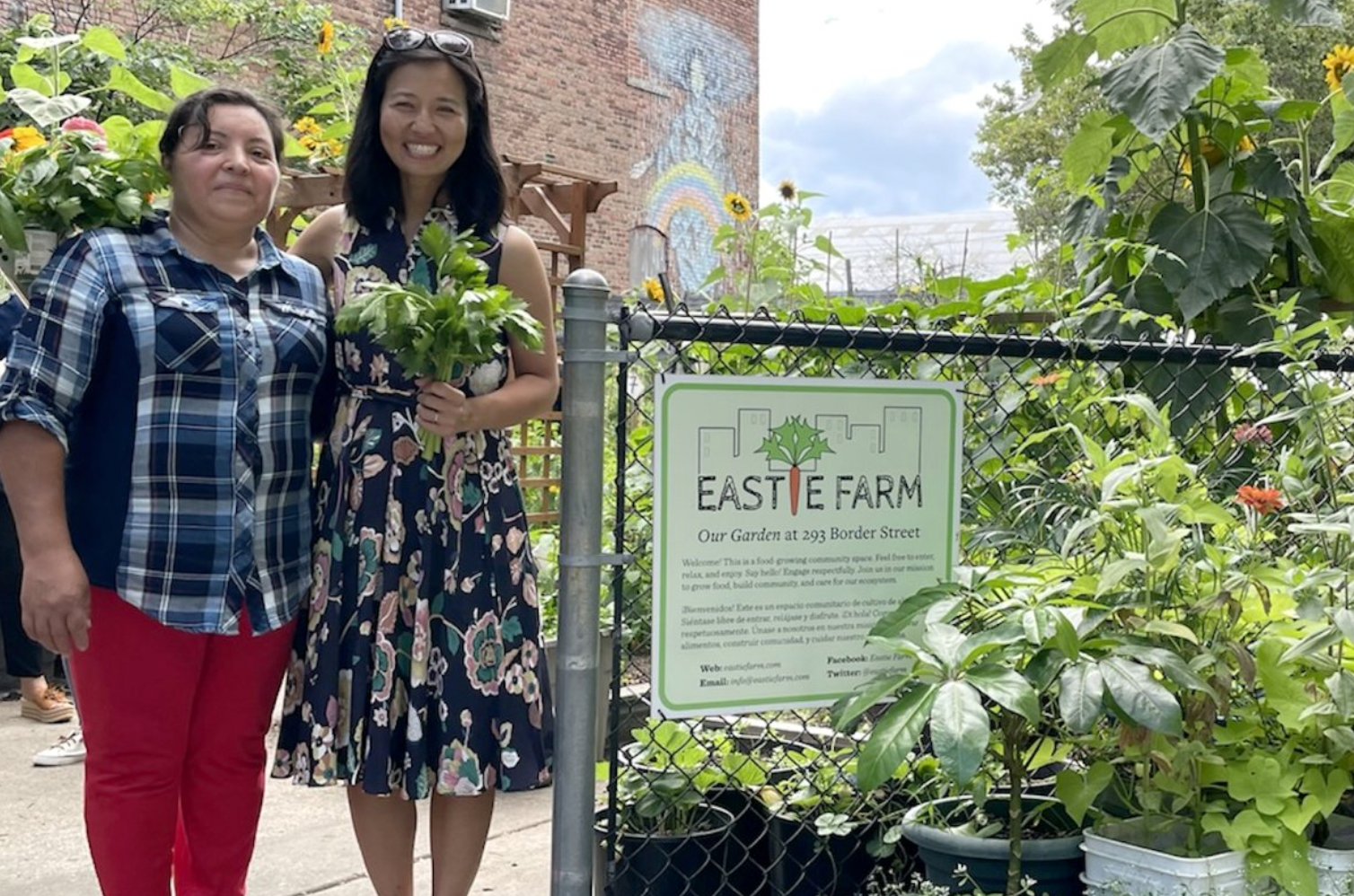Learn About the Fight for Values-Based Food Purchasing — and Recommendations from a New Report
Cinnamon Janzer
While Taylor Farms technically produces fruits and vegetables, the word “farm” in its name is as close as the produce processing conglomerate — the largest in North America — gets to an actual farm. In reality, Taylor Farms is just another stop on the supply chain, processing and packaging fruits and vegetables from various suppliers across the country. Obfuscations like these are rampant in the food industry across the United States and beyond, disguising not only how distant products and production methods are from “natural,” but also pervasive issues such as often-exploitative labor practices or animal abuses.
Increasingly, though, people and organizations around the country are waking up to these realities and demanding change. In 2016, Taylor Farms’ processing facility in Tracy, California, was riddled with dozens of safety violations. It was also the locus of what Doug Bloch, political director of the Teamster Joint Council 7, described as the worst union-busting campaign he’d seen in his decades of organizing. At the time, Taylor Farms was a supplier for the Oakland Unified School District; building on existing efforts by district staff and local parents, Bloch and the Teamsters, Taylor Farms workers and other activists successfully lobbied the district board to cancel its Taylor Farms contract. The success of their efforts hinged, in part, on the district’s stated values, which include equity and integrity.
“The core problem, as I see it, is the anonymity of the food system,” explains Vern Grubinger, an extension professor with the University of Vermont. “All kinds of purchases are being made contrary to the purchaser’s values. We continue to invest in and support the things that are broken in our food system. So much effort is aimed at symptoms when the core problem is the constant investment in the things that we don’t want.” This lack of transparency can be especially concerning when it comes to institutional procurement, the contracts held by entities like cities and universities to purchase large amounts of food.
There is, however, an alternative model: values-based food purchasing. Oakland’s school district didn’t just cancel one contract as a result of local advocacy efforts; they became one of the first bodies to adopt the Good Food Purchasing Program (GFPP), a framework designed to help large institutions shift towards purchases that support local food systems, fair labor practices, animal welfare, public health and the environment.
Now, a new report looks back on the last 10 years of the effort. “Procuring Food Justice: Grassroots Solutions for Reclaiming Public Supply Chains” was researched and published by the Food Chain Workers Alliance (FCWA) and the HEAL Food Alliance — coalition-based organizations (and national GFPP partners) focused on increasing equity and justice throughout the food chain, in partnership with members of their Good Food Communities initiative. The report assesses both the GFPP’s successes and shortcomings and provides recommendations for, in the words of Jose Oliva — HEAL’s campaigns director, co-founder and former director of the FCWA and an author of the report — making “values-based food procurement the future” for all of us.
Pervasive Corporate Control
As is the case in many sectors, corporate control dominates the agriculture industry in the United States. From the seeds in the ground to the food on our fork, just a handful of corporations control nearly all of the production, processing and distribution of food in the country, from grocery stores to school districts, hospitals, corporate cafeterias and prisons.
Corporate kickbacks handed out by preferred vendors have played a major part in getting us here. Suppliers that sell to food service management companies (the entities that manage institutional food service operations) often provide discounts in order to incentivize continued business. The management companies forward just a small portion of that savings onto the institutions they serve, keeping the rest for themselves. Through these methods and more, corporations “corner institutional procurement markets, using taxpayer dollars to consolidate power,” the report reads. “Their stranglehold on this market means they get away with feeding low-quality food to vulnerable communities, exploiting their workers, and harming the planet — all to increase their profit margins.”
Over the last decade, activists and organizations like those behind “Procuring Food Justice” have strategically identified public procurement as an actionable pathway for wresting back corporate control of food production. By leveraging the purchasing power of public institutions, the goal is to transform the industry from a profit-driven model to one that’s centered on an intersectional understanding of justice and equity.
The billions of dollars that public institutions spend on food “drive the market in a particular direction,” Oliva explains. “If those public institutions were all in sync, if they were all saying, ‘No, we won’t buy food that contributes to global warming,’ or, ‘No, we will not buy food that contributes to labor exploitation or animal abuse,’ and these were the new standards by which all food [procurement] must abide by in order for us to even consider it…It would be revolutionary.”
A Decade of Values-Based Procurement
Developed by the Los Angeles Food Policy Council and inspired by similar approaches to reforming sweatshop practices in L.A.’s apparel supply chains, the Good Food Purchasing Program offers policy and campaign strategies, technical support and other resources for institutions hoping to move toward values-based procurement. The GFPP was first adopted in 2012 by the City of L.A. and the L.A. Unified School District; in 2015, the Center for Good Food Purchasing was created to house it. Today, the center works with 63 public institutions and agencies, including entire municipalities and hundreds of partner organizations across the country.
In 2019, BIPOC organizers and GFPP partners launched a new initiative, Good Food Communities, that aims to address areas where the first iteration of the GFPP fell short, leveraging the program to ensure living wages for frontline workers, adequate infrastructure for BIPOC producers and better environmental protections. “Procuring Food Justice” builds on this work by focusing on justice for frontline food workers, who the report notes are “are predominantly people of color, women, and immigrants” — a reality that was starkly highlighted by the COVID-19 pandemic.
The FCWA and HEAL researched what would become the report from September 2021 to March 2023. The authors and their teams drew largely on the lived experiences and testimonies of those working on the ground in supply chains governed by GFPP agreements: production and warehouse workers in Florida and Illinois; farmers in Minnesota; food aggregators in New York and New Mexico; processing plant workers in Missouri; and other organizers, advocates and academics.
Through this research, “Procuring Food Justice” outlines how, exactly, food procurement works, as well as the exploitation that’s often under the surface. One of the central challenges highlighted is the ongoing need for transparency in the supply chain and enforcement of GFPP guidelines. The report shares the results of a 2022 Warehouse Workers for Justice survey of Chicago-area workers whose employers are required to follow GFPP labor standards. Of the full-time and temp employees surveyed, 55% said low wages meant they sometimes struggled to feed their families; 24% felt their employer didn’t respect their right to unionize; 74% were not provided health insurance by their employers; and 21% felt that calling in sick would put their job at risk.
“This worker exploitation is often invisible to most of us as the public, but is also very rampant in our public supply chains,” explains Christina Spach, the FCWA’s food campaigns director. “Public food contracts should not be offered to companies who don’t treat their workers with dignity and respect.”
The report also notes that policy adoption alone is not enough. Only 21% of the workers surveyed knew about the Good Food Purchasing Program at all and only 7% knew that they were working in a public supply chain governed by it. As Colleen McKinney, director of engagement for the Center for Good Food Purchasing, explains, “Ongoing organizing to make sure that policy is really being implemented…is really critical.”
Charting a Path Forward
Looking to the future, “Procuring Food Justice” ends with policies and best practices for legislators, institutions, suppliers, food service management companies and others working to clean up the procurement supply chain. For example, in light of the Chicago findings, the report notes that suppliers in GFPP supply chains should be required to educate workers about the program, inform them of their rights and protections and provide them with mechanisms to hold their employers accountable.
According to other strategies and recommendations, purchasers can work to ban kickbacks by auditing invoices to ensure they aren’t being overcharged for discounted items. Community advisory councils can be established to enforce values-based procurement practices, taking the task off the plate of administrators who might lack the capacity. These councils can also create a list of Good Food Suppliers to make identifying values-based suppliers easier. Institutions and legislators can push for and create incentives, investments and programs that address the infrastructure gaps facing BIPOC producers — like offering funding for crop insurance or facilitating apprenticeship and training programs — with the goal of increasing access to procurement contracts.
“Policymakers have to take this very seriously and understand that the future of our planet is literally at stake here,” Oliva says. He hopes the evolution of the GFPP will show suppliers they can still profit without harming people, animals or the environment — and predicts that this will increasingly become a factor in institutions’ procurement choices. “There would be a bigger market for your food,” he says, addressing suppliers considering making values-based changes to their operations, “because that’s the direction the market is going in anyway.”
—
Photo: Zou Zheng/Xinhua via Getty Images


